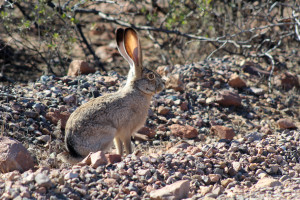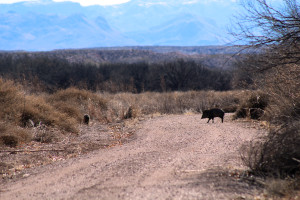
Nestled in the Rió Yaqui basin 19 miles east of Douglas, down Geronimo Trail, is an ecological wonder unknown to many.
This unique area where Arizona, New Mexico, and Mexico meet is the result of four vastly different ecological regions colliding. The Sierra Madres, Rocky Mountains, Sonora Desert, and Chihuahua Desert converge to form an uncommon wetland in an area where water is scarce.
In 1982, the San Bernardino National Wildlife Refuge was established to help protect this oasis tucked into Arizona’s southeast corner.
“The most unique thing about the refuge is the amount of water,” said Christopher Lohrengel, assistant manager of San Bernardino National Wildlife Refuge, “You don’t see that in Arizona outside of the Colorado River.”
Small rivers and streams branching off the Rió Yaqui in Mexico provide this area with water.
Due to the abundance of water, the refuge is home to a vast variety of birds, mammals, reptiles and amphibians. The refuge is also home to many species that cannot survive in the harsh arid environment of the Sonoran Desert. A variety of toads, frogs and turtles nest in these wetlands.
The refuge is excellent for hiking and wildlife photography. Dove, quail and rabbit hunting are also allowed on the refuge in designated areas.
 After a short hike from the gate at Geronimo Trail, visitors will arrive at an overlook. In the distance, across the border in Mexico, the Peloncillo Mountains fill the skyline. Down below, small lakes scatter across the landscape merely hinting at the amount of water waiting below.
After a short hike from the gate at Geronimo Trail, visitors will arrive at an overlook. In the distance, across the border in Mexico, the Peloncillo Mountains fill the skyline. Down below, small lakes scatter across the landscape merely hinting at the amount of water waiting below.
While hiking down into the basin, visitors will notice the desert shrubbery dwindling away to reveal a hidden oasis of grassy, rolling plains intersected by small running streams and creeks. Visitors who explore deeper into the refuge can follow trails cutting through the cottonwood trees that reveal streams, ponds and a small cemetery.
The refuge begs to be photographed. Circling above in the sky, three red-tailed hawks search for prey. Inside a pond, ducks swim above a school of the protected Rió Yaqui fish species. Small game birds such as quail and doves nest in the cottonwood trees.
More than 350 species of birds have been documented on the refuge, and a few of those species are found nowhere else in the United States. According to Lohrengel, almost 6,000 people visit the park annually, and it is one of the more popular bird watching destinations in Cochise County.
The biggest draw to the refuge is the wildlife. While other national parks and monuments have more intensive hiking trails and camping, the refuge’s quantity and diversity of wildlife is unmatched.
That is why the protection provided by the National Wildlife Refuge System is so important. This oasis in the desert is home to many species that cannot survive in the harsh conditions of the desert. And without the refuge, this unique area and its inhabitants would be in danger of extinction.
Located adjacent to the refuge is the Slaughter Ranch, a small ranch-style home built next to the shore of a pond. Nourished by the pond, a sea of green grass envelops the entire estate. The ranch was originally the home of Old West gunfighter John Horton Slaughter. He was elected sheriff of Cochise County in 1886 and worked to rid the area of lawbreakers. Slaughter was responsible for tracking and capturing Geronimo, the legendary Apache chief caught on the San Bernardino Ranch in 1886.
The Slaughter Ranch is now a museum for those with an interest in the history of the Southwest.
 Because the refuge is next to Mexico, the area has a heavy presence of Border Patrol officers. Their presence, however, fails to diminish the excitement many find when they come here.
Because the refuge is next to Mexico, the area has a heavy presence of Border Patrol officers. Their presence, however, fails to diminish the excitement many find when they come here.
“The amount of water and wildlife here is really something special,” Lohrengel said. “It really is a unique area.”
Nicholas Cada is a reporter for Arizona Sonora News, a service from the School of Journalism with the University of Arizona. Contact him at [email protected].

